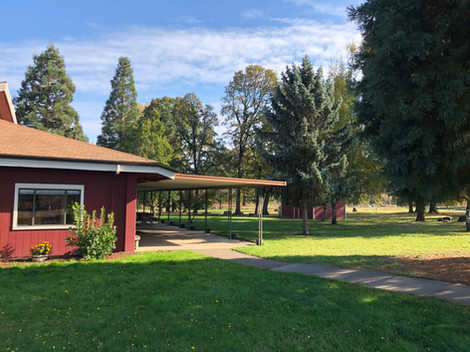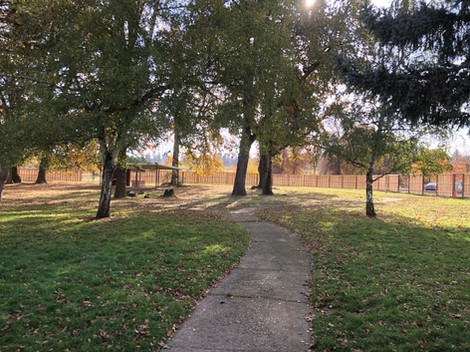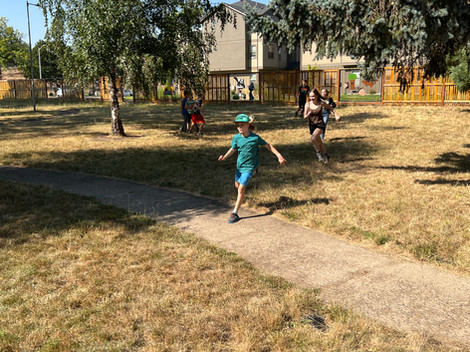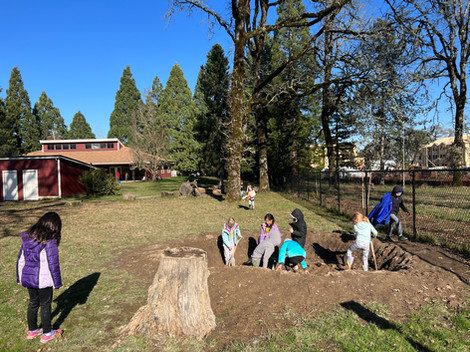"The power of imagination makes us infinite."
-- John Muir
OUR SCHOOL
Heritage School was founded on the idea that integrating the various subjects allows for a deeper, more comprehensive understanding of the world. Our integrated, thematic approach allows us to explore topics in depth while accommodating the needs and interest of students encompassing a wide range of ages. We resemble the "one room schoolhouse" atmosphere in some respects because we generally have about thirty-five students from grades one through eight. We address students’ needs through a combination of individual, small group, and large group instruction. We strive to provide a more personal education, allowing for individual interests and abilities, while at the same time creating a sense of community that more authentically resembles the mixed ages inherent in the workplace and in our daily lives.
Our emphasis on creating an environment that fosters cooperation enables us to avoid using competition as a motivating force. A child who is ready for more advanced academic challenges need not be held back, and a child who would benefit from more review need not be pushed ahead at the risk of missing vital skill development.
We provide a "hands-on" approach to learning. Our students do not sit in desks in rows; they move about, they study and work in collaboration with one another, and they learn how to make constructive choices about how to use their time productively. They learn to identify their accomplishments and establish personal goals.
Our students love to share what they have learned and go about this in creative ways: producing a variety of projects, writing, art, drama, oral presentations, and so on. Children are born with an immense capacity to learn and a natural curiosity about the world. We want to nurture their love of learning and equip them to be lifelong learners.
The Heritage School admits students of any race, color, religion, sex, sexual orientation, gender identity, national or ethnic origin, marital status, age or disability.
OUR LOCATION
Nestled in SE Salem, we love our building’s tall, gabled ceilings with clerestory windows. Built in 1986 as part of the state-run training center for the developmentally challenged, the building is the last remaining structure of the original Fairview Training Center. It was originally named "The Possible Building" because (although community leaders at the time thought the project might never be completed) volunteers and donated money brought the project to completion. In 2004 (Heritage School's first year on-site), the 5,400-square-foot building received extensive renovations.
Within the building, teachers and children make use of a large art room, a library, a science room, a math room, a writing center, a computer room,, a kitchen, and an open hallway space. Painted in bright colors, the walls hold student writing and artwork for all the community to enjoy. Our library holds over 10,000 titles and is continually updated. The computer lab holds several desktop computers, while Chromebooks are also available for student use, as needed. Children and parents care for the building and its grounds, and lovingly recognize the space as their educational home.
Our school’s many windows allow a pleasant, light-filled view of the fenced play area (also adorned with student artwork). A large stand of native Oregon oak and redwood trees provide shade for the two acres our school occupies at Fairview. There is ample space to build forts, play games, and study nature. The attached covered patio spans the eighty-five-foot length of the building, allowing plenty of room to exercise even during rainy weather. Opportunities for science excursions abound, as a creek and wetlands are within walking distance. Pringle Creek is just a short distance away. We have investigated water quality, measuring stream health, oxygen content, etc. For the past several years, we've also raised salmon fry given to us by the Oregon Department of Fish and Wildlife and released them into Pringle Creek with the hope that they will eventually make their way to the Pacific Ocean.

















